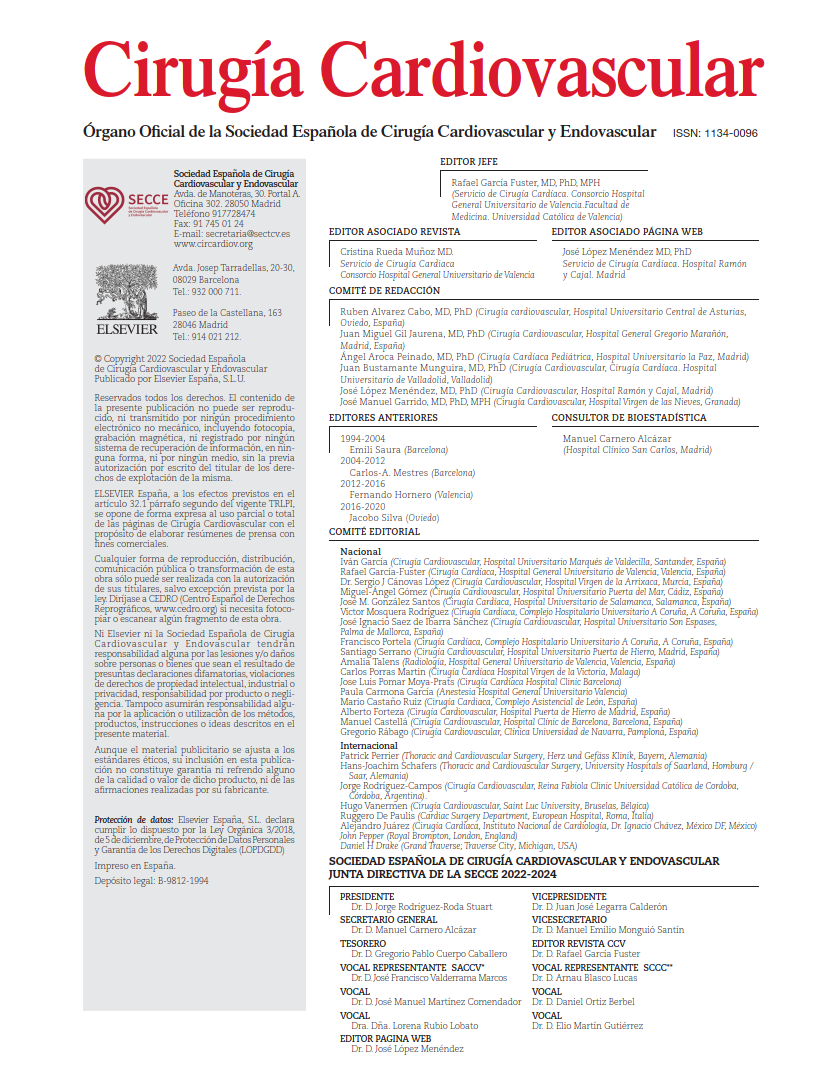Atrial fibrillation (AF) is common in elderly patients and accounts for approximately 25% of ischemic strokes. Most of these events are cardioembolic in origin and arise from the left atrial appendage (LAA). Although oral anticoagulation has proven effective and safe in preventing such events, it has limitations, including bleeding risk, lack of adherence, and, in patients treated with vitamin K antagonists (VKA), the need for regular monitoring.
LAA occlusion during cardiac surgery reduces the risk of stroke in patients with preoperative AF (LAAOS III trial), as well as in patients without prior AF but at high risk for thromboembolic events (ATLAS trial). However, it remains unclear whether these benefits extend to the entire population without preoperative AF.
Seventeen hospitals participated in the study. A total of 16,547 patients without preoperative AF and without prior cardiac surgery or LAA closure devices were evaluated. Among them, 442 underwent LAA closure. Propensity score matching yielded two groups of 439 patients each: P-LAAL group (prophylactic closure) and non-P-LAAL group (no closure).
No significant differences were observed between groups in terms of clinical heart failure, age, diabetes mellitus, hypertension, vascular disease, thromboembolic disease, sex, or thromboembolic risk as measured by the CHA₂DS₂-VASc score. The hypothesis was that patients undergoing P-LAAL would experience fewer strokes, with similar hospital costs, mortality, and readmission rates compared with controls.
Between 2017–2023, the main findings of the study were as follows:
- Longer cross-clamp times, longer ICU stay, higher incidence of immediate postoperative AF, more coagulation disorders, and higher hospital costs in the P-LAAL group.
- No significant differences in postoperative stroke, readmission, mortality, or readmission for thrombotic or bleeding complications.
- Progressive increase in the adoption of P-LAAL, particularly in 4 of the 17 participating centers.
COMMENTARY:
This study should be interpreted with caution. Patients undergoing CABG are at increased risk of developing AF, with the associated embolic burden; however, among cardiac operations, CABG may be the least strongly associated with new-onset AF.
Although oral anticoagulation remains the standard of care, surgical LAA closure emerges as an appealing adjunctive option, with no apparent excessive surgical burden. This may explain its progressive adoption across centers.
In parallel, in patients not undergoing surgery, interventional cardiology has pursued percutaneous LAA closure to mitigate the long-term adverse effects of anticoagulation. It is therefore logical that cardiac surgery seeks a similar strategy.
Previous evidence, such as the LAAOS III trial, demonstrated reduced stroke rates with LAA closure in patients with preexisting AF. The central question arises for patients without preoperative AF: while procedural safety may not differ, potential adverse effects in both the short and long term could be more relevant if the protective benefits are limited.
The only comparable study is the ATLAS trial, a randomized clinical trial that excluded patients with prior AF and demonstrated reduced thromboembolic events with concomitant LAA closure. With two studies reporting apparently divergent outcomes, it is critical to examine population differences:
- Both studies used the CHA₂DS₂-VASc index, with similar mean values (4 in the present study, with >91% of patients scoring >2, and 3.4 in ATLAS).
- However, cardiovascular risk assessed by SCORE2 (ages 40–69), SCORE2-OP (>70 years), and SCORE2-DM (diabetes) was significantly higher in ATLAS, suggesting a higher cumulative thromboembolic risk in its cohort. Another important point is that anticoagulation is never completely withdrawn in these patients, since robust evidence to support discontinuation is still lacking. Differences in therapeutic regimens, both qualitative and quantitative, may also explain the varying incidence of thromboembolic events across studies.
As both studies highlight, the benefits of P-LAAL outweigh its risks only in patients with high embolic risk. Identifying the factors that increase this risk is crucial to determine, within the population without AF, which patients could benefit from prophylactic LAA closure. Additional randomized trials with longer follow-up are therefore required. With sufficient experimental data, meta-analysis and sensitivity analyses will help define the key determinants. Only then can the threshold for surgical prophylaxis be established more precisely.
REFERENCE:
Noona SW, Young SD, Weber MP, El Moheb M, Norman AV, Wisniewski AM, et.al. Prophylactic left atrial appendage ligation during coronary artery bypass grafting: A propensity score-matched analysis. J Thorac Cardiovasc Surg. 2025 Jul;170(1):207-215. doi: 10.1016/j.jtcvs.2024.08.004.



